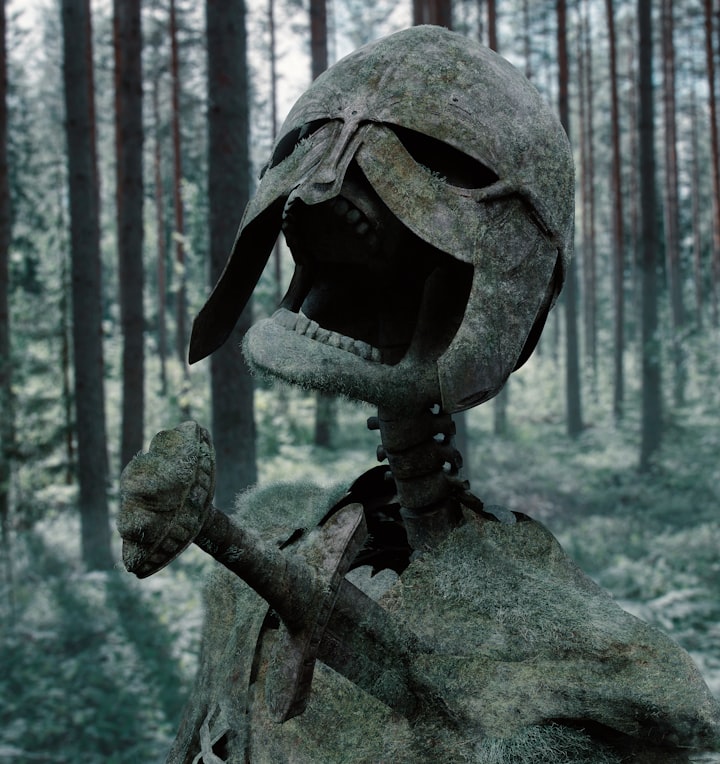A 5,300-year-old murder mystery
Albert Zinc

Two hikers passing through the Tzal Alps on the border of Austria and Italy on September 19, 1991, came across a body poking out of the ice.
Researchers soon realized they weren’t looking at the victim of a recent climbing accident, as initially assumed, but the mummified body of a man who’d lived about 5,300 years ago, whom they came to call Ötzi the Iceman.
It was once thought that Tzi was a local shepherd or hunter who got caught in bad weather and perished in the mountains.
But his true cause of death was eventually discovered in a shocking way.
Tzi was once believed to be a local shepherd or hunter who perished in the mountains due to bad weather.
However, the shocking truth about his true cause of death was eventually uncovered.
Despite leading an active life, he was genetically predisposed to cardiovascular disease.
Additionally, he had whipworms in his intestines and ulcer-causing bacteria in his stomach, all of which may have contributed to some unpleasant symptoms.
Around 3350 BCE, hundreds of years before Stonehenge and the Great Pyramid, he passed away.
Tzi lived in the late Neolithic Copper Age, a time when metalworking and mining techniques spread across Eurasia.
Tzi actually carried a copper axe from Tuscany in addition to stone arrowheads and knives.
His diet included cultivated grains, and large portions of his clothing were made of sheep and goat leather, all of which indicated that Tzi's people relied on certain domesticated animals.
plus crops.
And when scientists used light ranging from infrared to UV to examine Tzi's skin, they discovered a total of 61 tattoos.
It's interesting to note that the markings matched up with parts of Tzi's body where he probably felt pain, such as the degeneration seen in his knees, ankles, and spine.
According to researchers, the tattoos may have served as a form of treatment, possibly an early version of acupuncture.
The circumstances of Tzi's death were also made clear by careful examination, which revealed a fascinating prehistoric murder mystery.
After ten years of research on Tzi, a CT scan revealed an important finding:
Tzi's left shoulder had a flint arrowhead buried there.
Soon enough, the last few days of Tzi were pieced together by researchers.
Tzi's hand had a deep cut on it that was beginning to heal, so it must have happened just days before he passed away.
It was probably a defensive wound, indicating that Tzi had resisted a blade attack and lived to tell the tale.
Since bog moss was discovered with his remains and has antiseptic qualities, it's possible that Tzi used it to treat the wound.
Tzi's last three days were busy, and the types and locations of the pollen in his digestive tract suggested that it was either spring or the beginning of summer.
Tzi appeared to be running from something.
Tzi was near the timberline at a height of about 2,500 meters about 33 hours before he passed away.
Then, roughly 24 hours later, he made his way down to a region of warm-loving trees, at a minimum of 1,200 meters.
Tzi ascended to a height of about 3,000 meters in his final hours, where grasses, sedges, and some wildflowers predominated.
He ate a lot of dried wild ibex, roe deer, and grains for his last meal.
Then, despite Tzi's apparent attempts to flee the conflict, he was shot in the back from a distance.
Heavily blood was lost when the arrow embedded itself in his left shoulder and punctured a significant artery.
Tzi most likely passed away shortly after, with all of his belongings and remains remaining intact in the glacier for ages.
This 5,300-year-old unsolved case has provided priceless hints about the distant past.
But it's likely that the mystery of who Tzi was and why he was killed will never be fully understood because the physical proof of the crime has long since degraded and been carried away by snowdrifts.





Comments
There are no comments for this story
Be the first to respond and start the conversation.